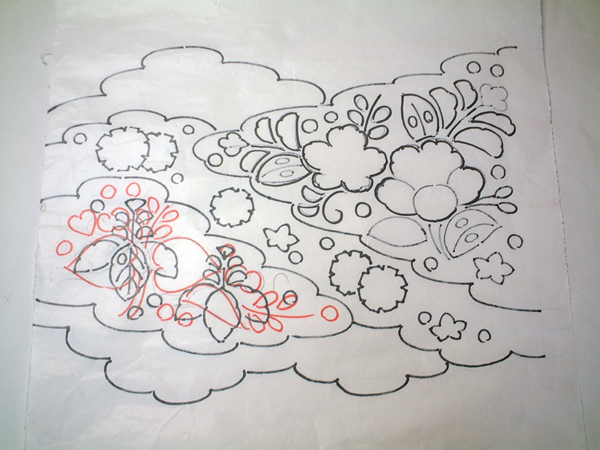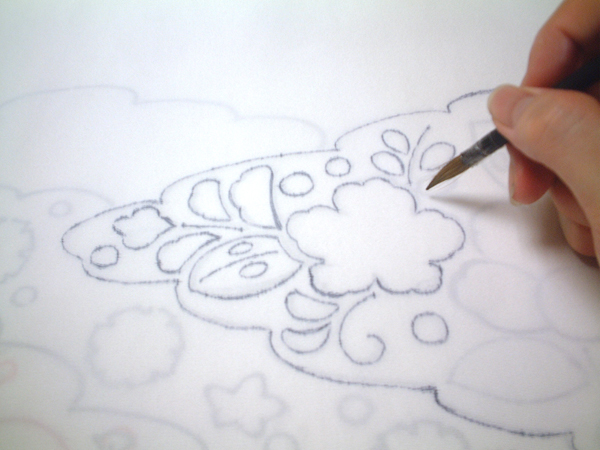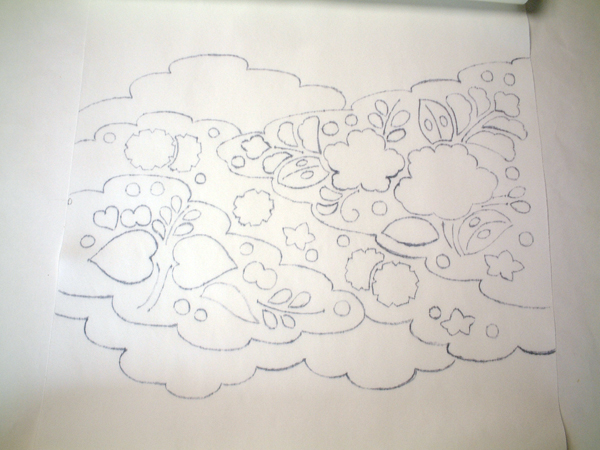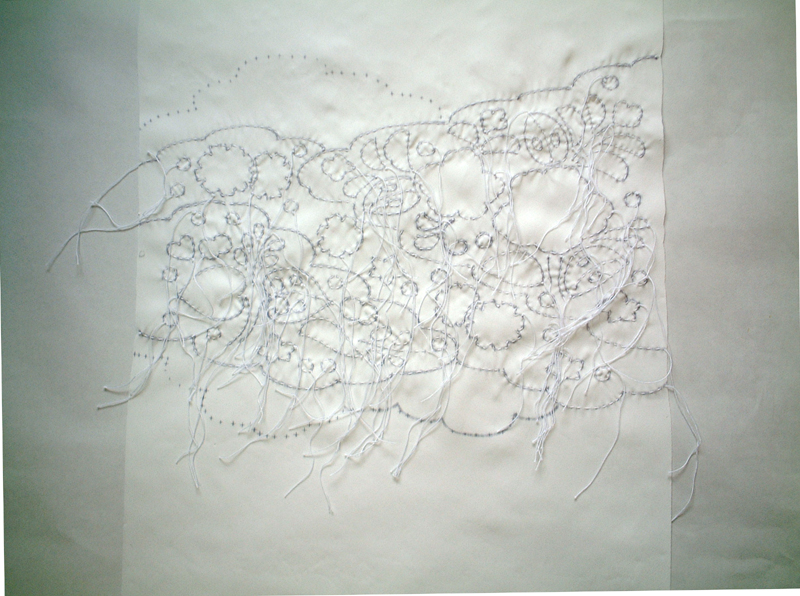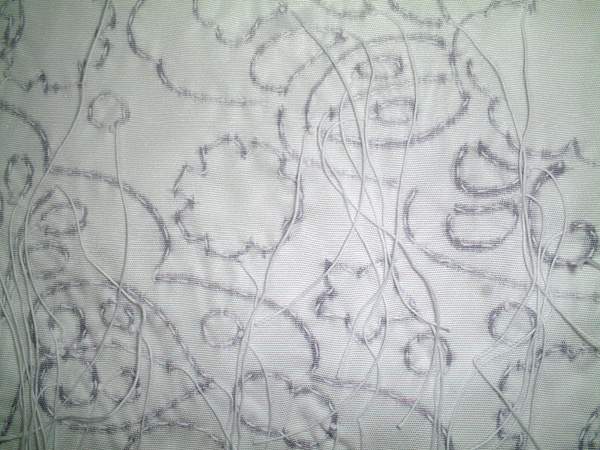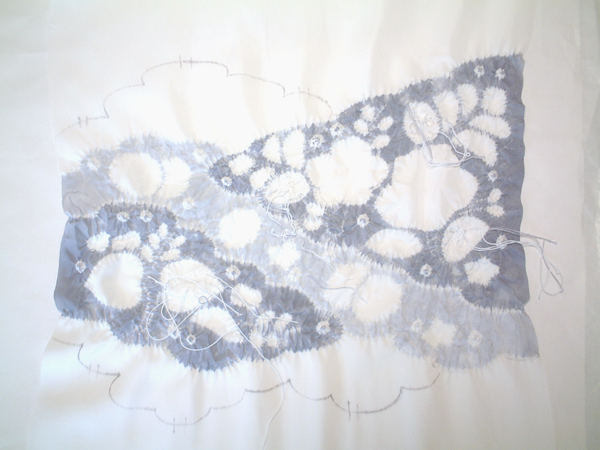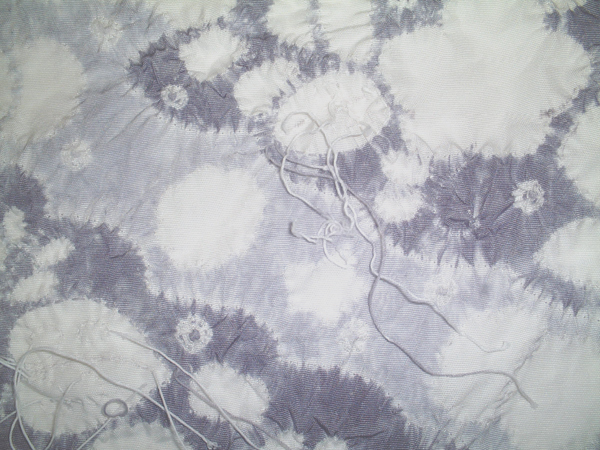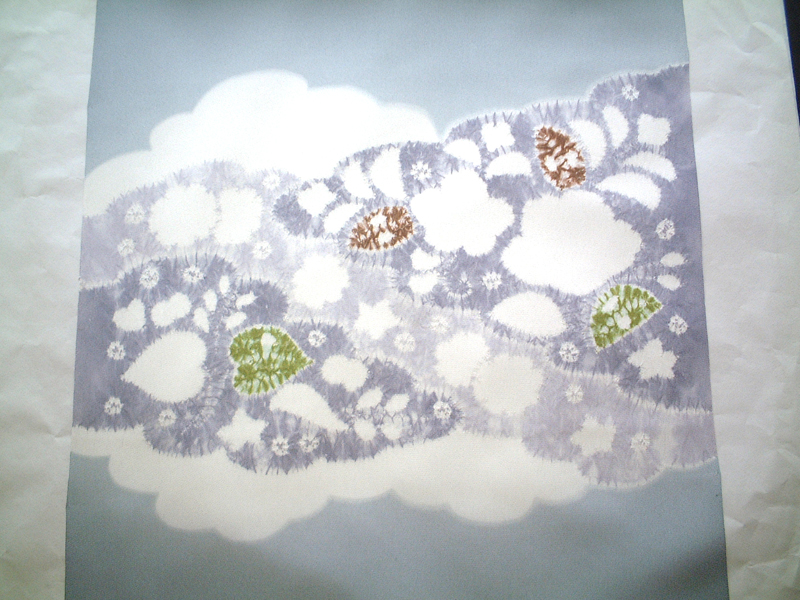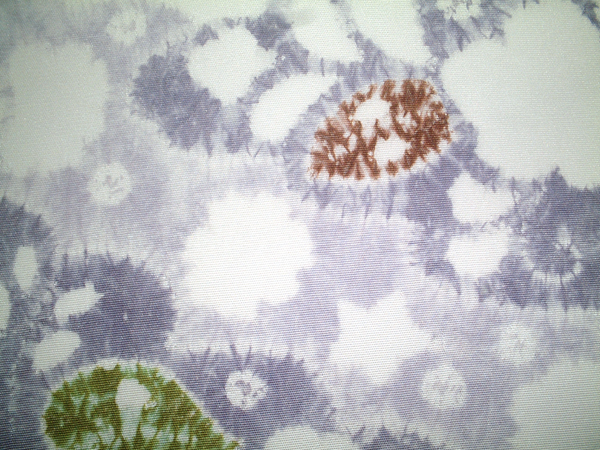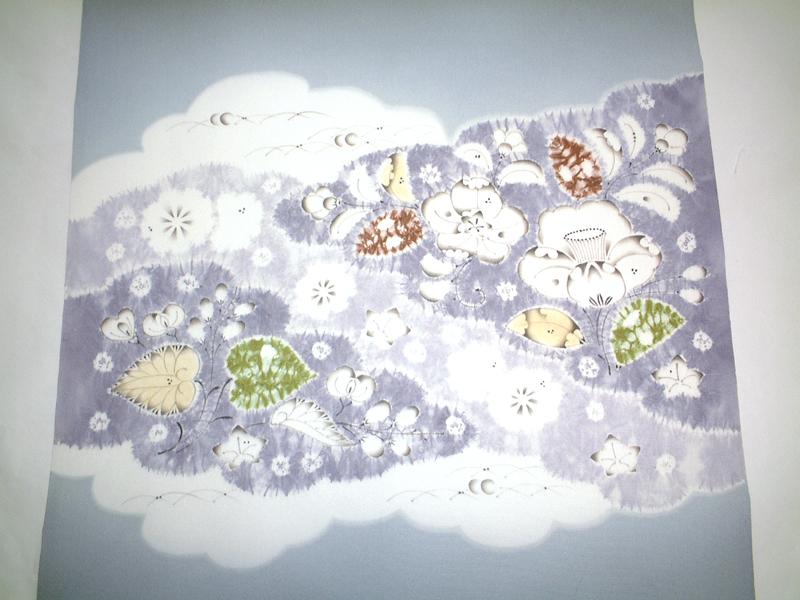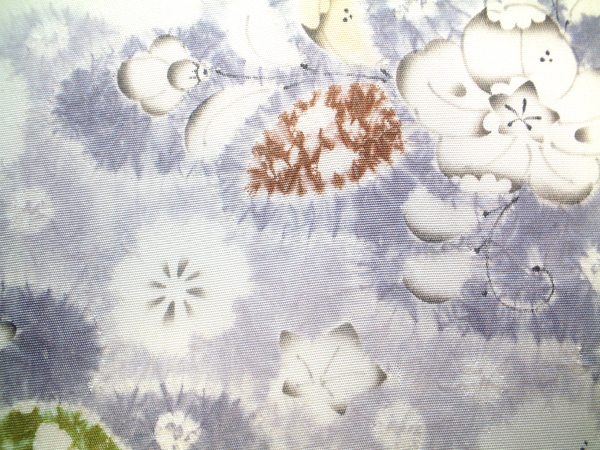What is tsujigahana
What is tsujigahana
It’s not necessarily appropriate to define what “TSUJIGAHANA” is because there are few remaining data and existing kosode (short-sleeved kimono), but tsuji-ga-hana may be defined as “what is used on the premise of tie-dyeing with drawing pictures, impressing foil, and embroidering”.
Tie-dyeing, which forms the basis of tsujigahana, has been traditional way of dyeing from Nara Period in Japan. There are various ways from those of basic and easy such as tying and bundling to those of difficult such as sawing outline of design and tying, and dyeing in different colors. The latter one is called “koukechi”, which is the way that prevents dye stuff from penetrating a textile.
In concrete terms, advanced techniques, such as complicated sawing, tying and tightening, and take-kawa-shibori (tying with a bamboo leaf), are used. In the case of making dappled cloth, which has tiny pattern, we only need to tie textiles with a thread, but when to make big design, the techniques of maki-age-shibori (coiling up tying) and take-kawa-shibori are used. When we dye textiles in different colors, the technique of oke-shibori (tying with tub) is used.
Maki-age-shibori is the way that protect against dyeing by coiling up a part. Take-kawa-shibori is the way that protect against dyeing by covering a part with a bamboo leaf. Bamboo leaves are now replaced by easy-to-use plastic. Oke-shibori is the way that protect against dyeing by putting a part in a tub.
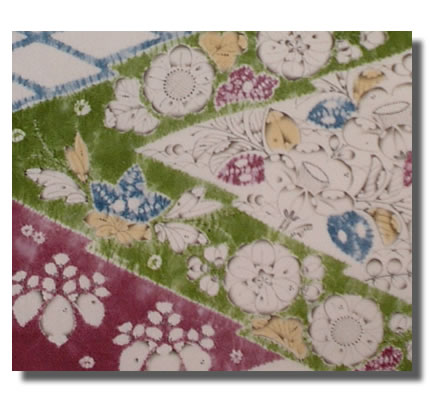
The name “tsuji-ga-hana” first emerged on a literature in the late 15th century. A literature says in 1596, Toyotomi Hideyoshi presented tsujigahana to an emissary from Ming as his/her farewell present. Tsuji-ga-hana, which range from simple tie-dyeing to impressing foil and embroidered gorgeous one, became fashionable in the public after a century from its birth. Simultaneously, the name “tsujigahana” seemed to have become popular as we associate kimono with “Yuzen”.
As we see in kosode of katsurame (woman merchant), battle surcoat, remaining kimono in Tokugawa, and so on, the height was about from the Momoyama period to the Edo period. By improvement of Yuzen dyeing, tsuji-ga-hana lost its significance of existence and died out in course of time.
Recent years, though “tsujigahana” has been becoming public knowledge by receiving media exposure, it seems that tsuji-ga-hana is merely one of the designs; however, “tsujigahana” is consistently “tie-dyeing”.
Tsujigahana is the technique which maximizes essential beauty of tie-dyeing by drawing pictures and impressing foil.
Process of Tsujigahana Dyeing
Let me introduce the process of tsuji-ga-hana dyeing.
The basis of tsuji-ga-hana is tie-dyeing for dyeing in different colors. In other words, by the presser of squeezing, dye stuff is prevented from penetrating textiles, and by repeating it, we make difference in colors and pictorial devices.

1. Rough Drawing
Copy a rough drawing on a sheet of paper to a textile by aobana (blue flower) (dye stuff disappears on contact with water)
The navy lines are aobana.
2. Stitching
Stitch with thread along the rough drawing. The tinier you stitch, the more beautiful the end result will be. The trace of thread will compose a design.
3. Tying
Techniques of sowing-and-tightening tying, tiny dappled cloth, maki-age-shibori (coiling up tying), take-kawa-shibori (tying with a bamboo leaf) and oke-shibori (tying with tub) are used. Maki-age-shibori and take-kawa-shibori are used for making big pattern.
Oke-shibori is used for dyeing the textile in different colors. Differences in designs and colors appear by pulling thread one by one.
4. Dipping and Dyeing
Dip the tied textile in dye stuff. At this time, the tied parts will dyed if it is dipped too long. In opposite, the textile will not be dyed enough if it is dipped too short. So, it’s difficult to assess staining time.
Every time dye the textile in different colors, repeat resist and dip dyeing.
5. Unthread
Unthread the textile when the all colors are dyed. We can’t know the design until unthreading. Unthread the textile with care not to cut it.
6. Steam
Steam the textile in order to entrench colors on it.
7. Smooth out creases
Fix the textile by smoothing out creases.
8. Ink in
Ink(sumi) in the not-dyed parts, and all finish.
Tie-dyeing is such a technique to dye a textile in different colors that making it three-dimensional is not the main aim, but it remains in result.
There exist various way of dyeing called “shibori”. We at E-Shibori-An make creation one by one in older method with great care.

